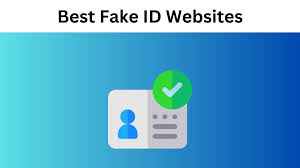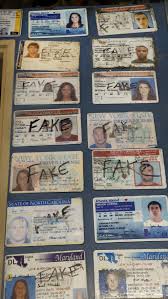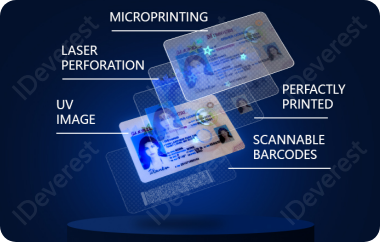scanable fake id's
Certainly! Below is a comprehensive article on "scanable fake ID's" that includes a product introduction, features, common questions, user reviews, issues encountered during use and solutions, and a conclusion.
Understanding Scanable Fake IDs: Everything You Need to Know
In a world where identity verification is increasingly rigorous, the demand for fake IDs that can pass modern security checks has risen. Whether you're a college student looking to get into bars or someone needing to bypass strict age restrictions, a "scanable fake ID" might seem like an attractive option. This article delves into what scanable fake IDs are, their features, common questions, user experiences, issues that may arise during their use, and ultimately, whether they are worth considering.
Product Introduction: What is a Scanable Fake ID?
A scanable fake ID is an imitation identification card designed to mimic real government-issued IDs, such as driver’s licenses or state IDs. Unlike traditional fake IDs that rely solely on visual deception, scanable fake IDs incorporate scannable barcodes, magnetic strips, and even RFID chips to fool electronic verification systems.
These IDs are crafted to pass both human inspection and machine validation, which has made them popular among underage individuals attempting to enter age-restricted venues, purchase alcohol or tobacco, or circumvent other age-related restrictions.
Features of Scanable Fake IDs
1. High-Quality Material and Printing
Scanable fake IDs are typically made using polycarbonate or PVC, the same materials used for legitimate IDs. This gives them a genuine look and feel. The printing quality is high-definition, replicating holograms, watermarks, and microprints that are commonly found on real IDs.
2. Barcode and Magnetic Strip Encoding
One of the most important features of a scanable fake ID is its barcode and magnetic strip. These components are encoded with data that matches the information printed on the card. When scanned, the data should ideally pass verification systems, making the ID appear legitimate.
3. Holograms and UV Features
To further mimic real IDs, scanable fake IDs often include holograms and UV features. These are designed to glow or change appearance under blacklight, which is a common test performed by bouncers or store clerks.
4. Customization Options
Most vendors offer extensive customization options, allowing the buyer to choose the state or country, date of birth, name, and even the photograph. This customization increases the chances of the fake ID passing casual inspections.
5. RFID Chip Integration
Some advanced scanable fake IDs may include an RFID chip, which is used in certain high-security environments. This chip can be programmed to contain specific data, further increasing the ID's authenticity.
Common Questions About Scanable Fake IDs
1. Are Scanable Fake IDs Legal?
No, using or producing fake IDs is illegal in most jurisdictions. Penalties can include fines, community service, and even jail time. The legality of possessing a fake ID varies by location, but in many places, even owning one can lead to legal consequences.
2. How Effective Are Scanable Fake IDs?
The effectiveness of a scanable fake ID largely depends on its quality and the scrutiny it faces. While many can pass casual checks, high-security environments with advanced scanning systems may detect the fake. It's also worth noting that some establishments use more sophisticated technology that cross-references data with national databases, which fake IDs cannot mimic.
3. What Happens if I'm Caught with a Scanable Fake ID?
Consequences vary depending on the jurisdiction and the situation. You could face legal charges, have the ID confiscated, and be banned from the establishment where you were caught. In some cases, law enforcement might be involved, leading to criminal charges.
4. How Much Do Scanable Fake IDs Cost?
The cost of a scanable fake ID can range from $50 to over $200, depending on the quality, the vendor, and the specific features included. Higher prices generally indicate better quality and more sophisticated features.
5. Where Can I Buy a Scanable Fake ID?
Scanable fake IDs are typically sold online through various vendors. However, purchasing these IDs carries risks, including potential scams, legal repercussions, and the possibility of receiving a low-quality product.
User Reviews: What Are People Saying About Scanable Fake IDs?
Positive Reviews
Some users report that their scanable fake IDs have worked flawlessly in many situations, including getting into bars and purchasing alcohol. They often praise the quality of the materials and the accuracy of the scannable features, stating that the IDs look and feel just like the real thing.
- Example Review 1: "I've used my ID multiple times at different clubs, and it's scanned perfectly every time. The holograms and barcodes are spot on!"
- Example Review 2: "Honestly, I was skeptical, but this ID looks better than my real one. It’s passed every scan without a hitch."
Negative Reviews
However, not all experiences are positive. Some users have reported that their IDs were easily detected as fake, especially in locations with advanced scanning technology. Others mention issues with the magnetic strip or barcode not working, leading to embarrassment and potential legal trouble.
- Example Review 1: "The ID looked great, but it failed to scan at the first bar I tried. The bouncer immediately knew it was fake."
- Example Review 2: "I spent over $150 on an ID, and the magnetic strip didn't even work. It was a total waste of money."
Common Issues and Solutions During Use
1. ID Fails to Scan
One of the most common issues with scanable fake IDs is a failure to scan. This can happen if the barcode or magnetic strip is not encoded correctly or if it becomes demagnetized.
- Solution: Test the ID in a less risky environment before using it in a high-stakes situation. If it doesn’t scan, contact the vendor for a replacement or refund. Some vendors offer guarantees, but getting a refund may still be challenging.
2. Visual Inspection Failure
Sometimes, the ID may pass the scan but fail a visual inspection. This can happen if the holograms or microprints are not accurate or if the photo does not closely match the user.
- Solution: Ensure that your ID matches the appearance of your real ID as closely as possible, including the photo and physical attributes. Consider using a high-quality photo with good lighting and a neutral expression.
3. Legal Troubles
If caught using a scanable fake ID, legal consequences can range from a minor fine to serious criminal charges.
- Solution: If confronted by law enforcement, it is generally advised to cooperate and consult a lawyer as soon as possible. Legal consequences vary widely, so professional advice is essential.
4. RFID Chip Malfunction
For IDs with RFID chips, a malfunction can occur if the chip is not properly encoded or if the reader is more advanced than anticipated.
- Solution: Test the RFID functionality in a controlled environment. If it fails, the vendor may offer a replacement. However, the availability of this service depends on the vendor’s policies.
Conclusion: Are Scanable Fake IDs Worth It?
The appeal of scanable fake IDs lies in their ability to mimic real IDs, making them a tempting option for those looking to bypass age restrictions. However, the risks involved—including legal consequences, the potential for the ID to be detected as fake, and the high costs—mean that these IDs are far from a foolproof solution.
While some users report success, others face significant challenges, including malfunctioning features and encounters with law enforcement. If you are considering purchasing a scanable fake ID, weigh the risks carefully against the potential benefits. The short-term gain of getting into a bar or buying alcohol may not be worth the long-term consequences.
In conclusion, scanable fake IDs might work in some situations, but they are not a guaranteed solution. The legal risks, financial costs, and potential for failure make them a risky investment. Before deciding to purchase a scanable fake ID, it’s crucial to understand all the possible outcomes, both positive and negative.
This article provides a thorough overview of scanable fake IDs, including their features, common issues, and potential consequences. Remember, the use of fake IDs is illegal, and the risks often outweigh the rewards.
 scannable Fake Massachusetts D
scannable Fake Massachusetts D
 scannable Fake Maryland DL
scannable Fake Maryland DL
 scannable Fake Delaware DL
scannable Fake Delaware DL
 scannable Fake Alabama DL
scannable Fake Alabama DL